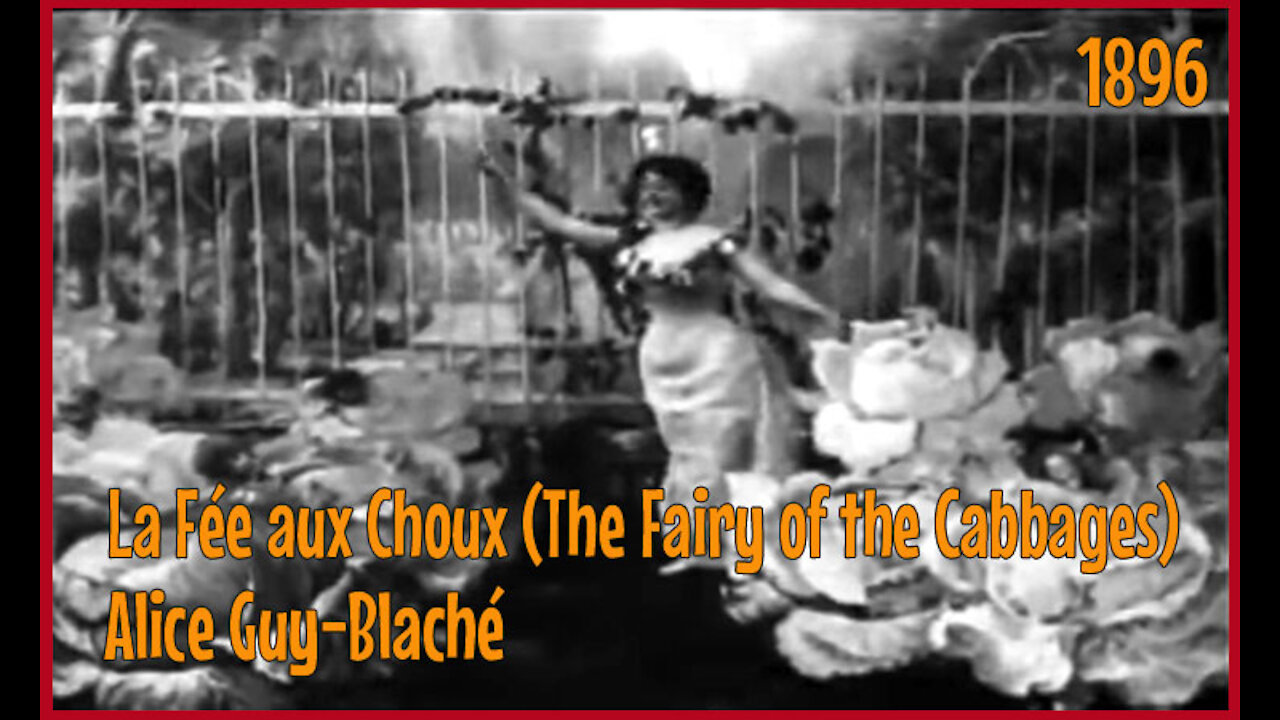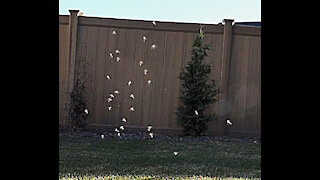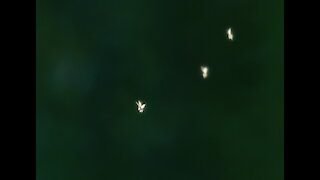Premium Only Content

La Fée aux Choux (The Fairy of the Cabbages) 1896
The 1896 version of La Fée aux Choux (The Fairy of the Cabbages), is a lost film that featured a honeymoon couple, a farmer, pictures of babies glued to cardboard, and one live baby. This is arguably the world's first narrative film, and the first film directed by a woman.
Alice Guy-Blaché reported that she had to remake the film at least twice and this accounts for the two films dated 1900 and 1902 that are available to view online. Alice's 1900 version employed one actress (the fairy), two live babies, and a number of dolls. Her 1902 version, later retitled Sage-femme de première classe, employed a honeymoon couple and a female baby merchant along with numerous babies and dolls. In a still photograph from the 1902 version called Sage-femme de première classe (Midwife First Class) Alice appears, dressed as a man. She does not play the husband in the film, but said that she "for fun pulled on the peasant clothes" for the photograph.
Alice's 1896 film was the first to bring a story to an audience and the first to have a written scenario which Alice wrote. The 1896 version was filmed on 60-millimeter film and was about 30 meters (about 90 feet) long. The 1900 version of La Fée aux Choux is on 35-millimeter film and is about sixty seconds long. The 1902 version is on 35-millimeter film and is about four minutes long.
All three versions refer to an old and popular French (and actually, European) fairy tale in which baby boys are born in cabbages, and baby girls are born in roses.
Alice Guy-Blaché, the director of La Fée aux Choux, is one of the early cinema's most important figures, and had a long career as a director, producer and studio owner, working in both France and the United States.
Classic Clips
http://classicclips.ca
-
 2:23
2:23
Classic Clips
11 days agoThe Premiere Of The Ten Commandments (Behind The Scenes HD) 1956
58 -
 0:11
0:11
Hikes and more
3 years agoWaterfalls Cascada
222 -
 4:04
4:04
DallasArtworks
3 years agoColoring of a Woodland Fairy
35 -
 3:08
3:08
OrbSkyWatcher_Angels
3 years agoFairy Angel Swirlons Part 3
311 -
 4:05
4:05
OrbSkyWatcher_Angels
3 years agoFairy Angel Swirlons Part 2
44 -
 1:19:29
1:19:29
Savanah Hernandez
12 hours agoRogue Judges Continue Blocking Trump's Executive Orders: The First 100 Days
78K41 -
 58:42
58:42
Coin Stories with Natalie Brunell
18 hours agoMacro Analysis, Financial Fragility and Bitcoin as the End Game with Preston Pysh
36.5K4 -
 2:35:37
2:35:37
TimcastIRL
9 hours agoTrump Celebrates 100 Days Amid RECORD Lawsuits & Unconstitutional Judicial Actions | Timcast IRL
214K90 -
 1:01:26
1:01:26
Glenn Greenwald
11 hours agoRapid Fire: Canada Elections, Dem's Sit-In, Israeli Taking Points Escalate; PLUS: Jewish Academics Push-Back on Antisemitism Claims | SYSTEM UPDATE #445
132K126 -
 2:20:43
2:20:43
RiftTV/Slightly Offensive
10 hours ago $19.29 earnedTotal Indian TAKEOVER: Has The WEST Completely FALLEN? | Guest: Josh Denny
72.1K28